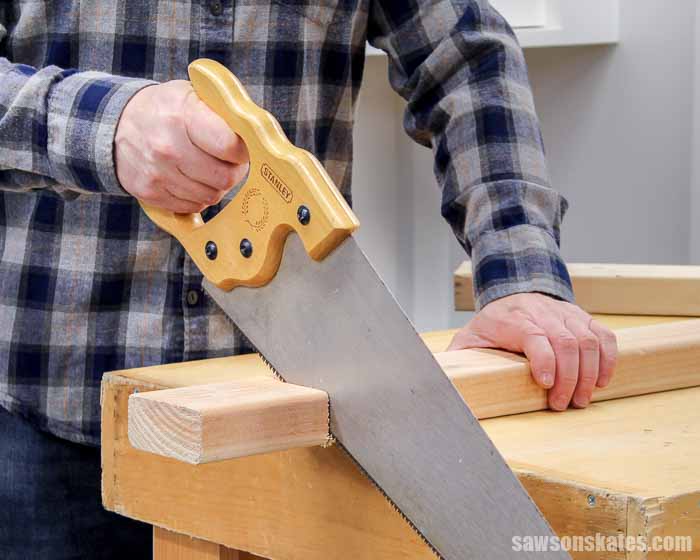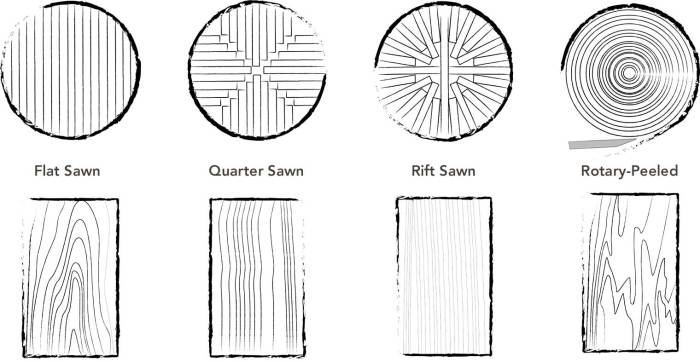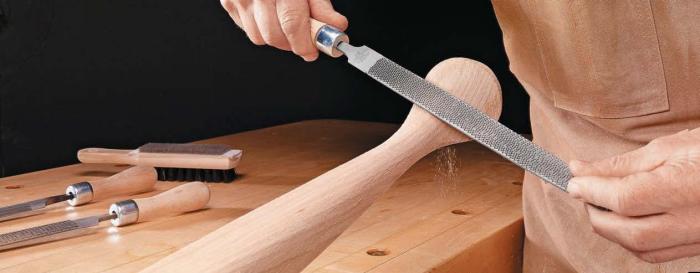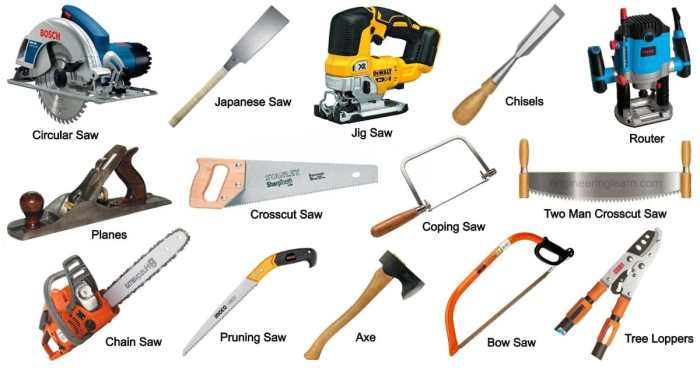Woodworking patterns are the blueprints of creativity, guiding woodworkers to transform raw materials into stunning pieces of art and functional objects. From intricate dovetails to sweeping curves, patterns have been shaping the world of woodworking for centuries, evolving alongside the skills and techniques of artisans.
This journey into the world of woodworking patterns explores the history, creation, application, and diverse techniques that make these guides indispensable for crafting everything from furniture and decorative items to architectural elements.
Introduction to Woodworking Patterns

Woodworking patterns are the blueprints for creating beautiful and functional wooden objects. They serve as guides, dictating the shape, size, and intricate details of a project. They’re the key to achieving precision and consistency, making them indispensable tools for woodworkers of all levels.
Woodworking patterns have a rich history, evolving alongside the craft itself. Early patterns were often simple, hand-drawn sketches or templates used for basic shapes. Over time, the use of more complex patterns, such as those created with stencils or specialized tools, allowed for more intricate designs and detailed carvings. Today, digital technology plays a significant role in pattern creation, with computer-aided design (CAD) software allowing for highly detailed and customizable patterns.
Types of Woodworking Patterns
Woodworking patterns can be categorized based on their function and application. Here are some common types:
- Templates: These are flat patterns that can be traced onto the wood to create the desired shape. They are often used for simple shapes like circles, squares, and rectangles, but can also be used for more complex designs.
- Stencils: Similar to templates, stencils are used to create repeated patterns or designs. They often feature cutouts that allow for precise transfer of the design onto the wood.
- Mouldings: These are patterns used to create decorative edges or profiles on wood pieces. They can be created using a variety of methods, including hand-carving, router bits, or specialized molding machines.
- Architectural Patterns: These patterns are used for creating intricate details on furniture, buildings, and other architectural elements. They often involve complex geometric shapes and intricate carvings.
- Inlays: These patterns are used to create decorative designs by inserting pieces of wood, metal, or other materials into a base material. They are often used to create intricate patterns and images.
Creating Woodworking Patterns

Woodworking patterns are essential for achieving accurate and consistent results in your projects. They serve as blueprints, guiding you through the cutting, shaping, and assembly processes. Creating your own patterns allows you to customize projects and bring your unique ideas to life.
Designing Woodworking Patterns
The first step in creating woodworking patterns is to design them. This involves sketching out your project, determining its dimensions, and deciding on the details you want to include. Here are some key steps to follow:
- Sketch your project: Start with a basic Artikel of your project, focusing on its overall shape and dimensions.
- Add details: Once you have the basic Artikel, you can start adding details such as curves, angles, and decorative elements.
- Choose your materials: Consider the type of wood you will be using, as this will affect the thickness and overall dimensions of your pattern.
- Use a ruler and compass: For precise measurements and curves, utilize a ruler and compass to create accurate lines and shapes.
- Create a scale drawing: If you are working with large projects, it can be helpful to create a scale drawing to ensure accuracy.
Transferring Patterns to Wood
Once your pattern is designed, you need to transfer it to your wood. Several methods can be used, each with its advantages and disadvantages:
- Tracing: This involves tracing your pattern onto the wood using a pencil or other marking tool. It is a simple and effective method, but it can be challenging to achieve perfect accuracy, especially for complex shapes.
- Projection: This method uses a projector to project your pattern onto the wood, allowing you to trace the Artikel with a pencil. It is a more accurate method than tracing, but it requires a projector and a dark room.
- Template Making: Templates are thin pieces of material that are cut to the exact shape of your pattern. You can then use the template to trace the Artikel onto your wood. This is a very accurate method, but it requires some additional time and effort to create the template.
Tips for Achieving Accurate and Precise Patterns
To ensure accurate and precise patterns, consider these tips:
- Use a sharp pencil: A sharp pencil will create clean and visible lines on your wood.
- Use a ruler and compass: For precise measurements and curves, utilize a ruler and compass to create accurate lines and shapes.
- Double-check your measurements: Before you begin cutting your wood, double-check your measurements to ensure accuracy.
- Use a cutting guide: A cutting guide can help you make straight and accurate cuts.
- Practice your cuts: If you are new to woodworking, it is a good idea to practice your cuts on scrap wood before working on your actual project.
Using Woodworking Patterns

Woodworking patterns are versatile tools that can elevate your woodworking projects from basic to extraordinary. They serve as blueprints, guiding you through the intricate details of shaping, cutting, and assembling wood to create stunning pieces.
Utilizing Woodworking Patterns for Different Projects
Woodworking patterns are applicable to a wide range of projects, from furniture and decorative items to architectural elements.
- Furniture: Patterns can be used to create detailed chair legs, intricate table tops, or elaborate drawer fronts.
- Decorative Items: Patterns can be used to create ornate picture frames, intricate wall hangings, or delicate wooden toys.
- Architectural Elements: Patterns can be used to create intricate moldings, decorative trim, or unique window frames.
Transferring Patterns to Wood
Transferring patterns to wood is a crucial step in using woodworking patterns. There are several methods for this process, each with its own advantages and disadvantages.
- Tracing: This involves tracing the pattern onto the wood using a pencil or other marking tool. It’s a simple and versatile method, suitable for various pattern types.
- Carbon Paper: Placing carbon paper between the pattern and the wood allows for accurate transfer of the pattern lines. This method is ideal for intricate designs.
- Pattern Router: This method uses a specialized router bit to cut the pattern into the wood, creating a precise template. It’s a more advanced technique, but it offers exceptional accuracy and detail.
Cutting and Shaping Wood Based on Patterns
Once the pattern is transferred to the wood, you can begin cutting and shaping the wood based on the pattern guidelines.
- Hand Tools: For basic patterns, hand tools like saws, chisels, and planes can be used for cutting and shaping.
- Power Tools: For more intricate patterns, power tools like jigsaws, band saws, and routers can be used to achieve precise cuts and shapes.
Assembling Wood Based on Patterns
Patterns often provide assembly instructions, guiding you through the process of joining the various pieces of wood to create the final project.
- Joints: Patterns may specify different types of joints, such as mortise and tenon, dovetail, or butt joints, to ensure strong and durable connections.
- Fasteners: Patterns may also indicate the use of screws, nails, or glue for securing the wood pieces together.
Examples of Woodworking Projects Using Patterns
Many woodworking projects utilize patterns for intricate designs and details. Here are some examples:
- Intricately Carved Furniture: Victorian-era furniture often featured intricate carvings, which were created using patterns to guide the carvers.
- Decorative Wooden Boxes: Intricate patterns can be used to create beautiful and unique wooden boxes, often adorned with intricate inlays and marquetry.
- Architectural Moldings: Patterns are used to create elaborate moldings for ceilings, walls, and doors, adding a touch of elegance to any building.
Types of Woodworking Patterns
Woodworking patterns are the foundation of many projects, guiding the creation of intricate joints, decorative elements, and overall structure. These patterns can be categorized into traditional and contemporary styles, each offering unique advantages and aesthetics.
Traditional Woodworking Patterns
Traditional woodworking patterns are time-tested techniques that have been used for centuries, providing strength and beauty to furniture, structures, and other wooden creations.
- Dovetail joints are renowned for their strength and intricate appearance. These interlocking, tapered pins and tails create a strong, visually appealing joint often used for drawer construction.
- Mortise and tenon joints are another classic choice for furniture making. They involve a tenon (a protruding piece) fitted into a mortise (a hole) in another piece of wood, creating a strong, rigid connection. Mortise and tenon joints are often used for legs, rails, and other structural elements.
- Miter joints create a 45-degree angle, allowing two pieces of wood to join at a corner. They are commonly used for picture frames, boxes, and other projects requiring precise angles. Variations like mitered lap joints offer added strength and stability.
Contemporary Woodworking Patterns
Contemporary woodworking patterns embrace modern design trends and explore new ways to utilize wood. They often incorporate geometric designs, free-form shapes, and decorative elements.
- Geometric patterns like triangles, squares, and hexagons create visually interesting and modern designs. They can be used in various applications, from furniture to wall art, adding a touch of contemporary style.
- Free-form shapes offer a more organic and flowing aesthetic. They can be achieved through techniques like carving, sculpting, or using flexible wood bending methods. Free-form patterns allow for unique and expressive designs, often found in artistic pieces and furniture.
- Decorative elements can be incorporated into woodworking patterns to enhance visual appeal. These elements can include inlays, carvings, marquetry, and other decorative techniques, adding a touch of artistry and personalization to the project.
Woodworking Patterns in Different Styles
Woodworking patterns have evolved over time, reflecting the design trends of different eras and cultures. Here are some examples of woodworking patterns used in various styles:
- Shaker furniture is known for its simple, functional design. Shaker woodworking patterns often emphasize clean lines, dovetail joints, and minimal ornamentation, reflecting the values of simplicity and practicality.
- Arts and Crafts furniture, popular in the late 19th and early 20th centuries, emphasizes handcrafted techniques and natural materials. Arts and Crafts woodworking patterns often feature intricate carvings, geometric designs, and a focus on the beauty of the wood itself.
- Victorian furniture is characterized by elaborate ornamentation and intricate details. Victorian woodworking patterns often incorporate elaborate carvings, scrollwork, and decorative elements, reflecting the opulence and grandeur of the Victorian era.
Woodworking Pattern Resources

Finding the right woodworking pattern can be the first step in bringing your project to life. You can find woodworking patterns in a variety of places, both online and offline. These resources can be a great way to find inspiration, learn new techniques, and save time on design.
Online Resources
Online resources offer a vast selection of woodworking patterns, making it easy to find what you need.
- Pattern Libraries: Pattern libraries are a great way to find a wide variety of patterns for different projects. Many libraries offer free patterns, while others require a subscription. Some popular pattern libraries include Woodcraft, Rockler, and LumberJocks.
- Online Retailers: Many online retailers sell woodworking patterns, including Amazon, Etsy, and eBay. These retailers offer a wide range of patterns from different manufacturers.
- Woodworking Blogs and Websites: Many woodworking blogs and websites offer free patterns and tutorials. These resources are a great way to find inspiration and learn new techniques. Some popular woodworking blogs and websites include Popular Woodworking, Fine Woodworking, and Woodworking for Mere Mortals.
- Social Media: Social media platforms like Pinterest and Instagram are great places to find woodworking patterns. Many woodworkers share their projects and patterns online.
Offline Resources
Offline resources can be a great way to find woodworking patterns if you prefer a more traditional approach.
- Woodworking Stores: Woodworking stores often carry a selection of woodworking patterns. These stores can be a great place to find patterns from local woodworkers.
- Libraries: Many libraries have a collection of woodworking books and magazines that contain patterns. These resources can be a great way to find patterns for free.
- Bookstores: Bookstores carry a wide selection of woodworking books that include patterns. These books can be a great source of inspiration and instruction.
Benefits and Limitations
Each resource has its own benefits and limitations.
- Online Resources: Online resources offer a wide selection of patterns, making it easy to find what you need. However, it can be difficult to determine the quality of patterns online. It’s also important to be aware of copyright issues when using online patterns.
- Offline Resources: Offline resources can be a great way to find high-quality patterns. However, the selection may be more limited than online resources.
Tips for Selecting Patterns
Selecting the right pattern for your project is important. Here are some tips to help you choose:
- Consider your skill level: Choose a pattern that is appropriate for your skill level. If you are a beginner, start with a simple project. If you are more experienced, you can try a more challenging project.
- Think about the project’s purpose: What will you use the project for? If you are making a gift, consider the recipient’s interests. If you are making something for your home, think about the style and decor.
- Read reviews: If you are considering a pattern from an online resource, read reviews from other woodworkers. This can help you determine the quality of the pattern.
- Look for clear instructions: The pattern should have clear and concise instructions. If the instructions are difficult to understand, you may want to choose a different pattern.
- Consider the cost: Woodworking patterns can range in price from a few dollars to hundreds of dollars. Choose a pattern that fits your budget.
Woodworking Pattern Techniques

Creating woodworking patterns involves various techniques, each with its own set of advantages and disadvantages. Choosing the right technique depends on factors like the complexity of the design, the level of precision required, and the tools and resources available.
Hand-Drawn Patterns
Hand-drawn patterns are a traditional and versatile method for creating woodworking patterns. They involve sketching the design directly onto paper or cardboard using pencils, pens, or other drawing tools.
- Advantages: Hand-drawn patterns offer flexibility and creativity, allowing for easy adjustments and modifications. They are relatively inexpensive to create, requiring only basic drawing tools and materials. Hand-drawn patterns are also ideal for creating unique and personalized designs.
- Disadvantages: The accuracy of hand-drawn patterns can vary depending on the skill and experience of the artist. They can be time-consuming to create, especially for intricate designs. Hand-drawn patterns are also prone to errors and inconsistencies.
Example: A simple hand-drawn pattern for a birdhouse can be created using a pencil and ruler on a sheet of paper. The pattern can then be transferred to wood using tracing paper or carbon paper.
Computer-Aided Design (CAD)
Computer-aided design (CAD) software allows for the creation of precise and detailed woodworking patterns digitally. Using CAD software, you can create complex designs, manipulate shapes, and generate accurate dimensions.
- Advantages: CAD software offers high precision and accuracy, ensuring consistent results. It allows for easy scaling and modification of designs. CAD software can also generate cutting lists and material estimates, streamlining the woodworking process.
- Disadvantages: CAD software requires a learning curve and can be expensive. It can be challenging for beginners to learn and master the software. While CAD software offers flexibility, it can also limit creativity if you rely heavily on pre-designed templates.
Example: A complex pattern for a custom cabinet can be created using CAD software. The software allows for precise measurements, intricate details, and the generation of cutting lists for different parts.
Laser Cutting
Laser cutting is a modern technique for creating woodworking patterns with high precision and speed. It involves using a laser beam to cut through materials, including wood, creating intricate and detailed patterns.
- Advantages: Laser cutting offers exceptional accuracy and detail, allowing for intricate and complex designs. It is a fast and efficient process, reducing production time. Laser cutting can also create multiple identical patterns simultaneously.
- Disadvantages: Laser cutting requires specialized equipment and expertise. It can be expensive for small-scale projects. Laser cutting can also leave burn marks on the material, requiring additional finishing steps.
Example: Intricate patterns for decorative wood panels or architectural details can be created using laser cutting. The process allows for precise cuts and complex shapes, enhancing the beauty and detail of the design.
Woodworking patterns are like blueprints for your projects, guiding you through the process. They can be as simple as a basic outline or as detailed as a full-scale drawing. Once you’ve chosen your pattern, it’s time to dive into the world of woodworking carpentry , where you’ll bring your pattern to life with tools and techniques.
From cutting and shaping to assembling and finishing, woodworking carpentry is the heart of creating beautiful and functional pieces. And with the right pattern as your guide, the possibilities are endless!
Woodworking Pattern Applications

Woodworking patterns are versatile tools used across various industries, contributing to the creation of beautiful and functional pieces. These patterns serve as blueprints, guiding the crafting process and ensuring consistency in design and execution. Their applications extend beyond traditional woodworking, impacting diverse fields like furniture making, construction, and art.
Furniture Making
Woodworking patterns are essential in furniture making, ensuring accurate and consistent designs. They provide a detailed guide for cutting, shaping, and assembling wood components, resulting in furniture that is both aesthetically pleasing and structurally sound.
- Traditional Styles: Patterns are used to replicate classic furniture designs, ensuring authenticity and historical accuracy. For example, a pattern for a Chippendale chair would meticulously Artikel the intricate carvings and proportions characteristic of this style.
- Modern Designs: Patterns are equally valuable in creating contemporary furniture. They allow designers to translate their innovative ideas into tangible forms, ensuring precision and consistency in the final product. For example, a pattern for a minimalist bookshelf would guide the construction of sleek lines and geometric shapes.
- Custom Furniture: Patterns enable the creation of unique and personalized furniture pieces. By adapting existing patterns or creating new ones, woodworkers can cater to specific client needs and preferences. For example, a pattern for a custom dining table might incorporate specific dimensions, wood types, and design elements to meet the client’s requirements.
Construction
Woodworking patterns play a crucial role in construction, ensuring accuracy and efficiency in building projects. They are used to create intricate moldings, decorative elements, and structural components, contributing to the overall aesthetic and functionality of buildings.
- Architectural Moldings: Patterns are used to create intricate moldings for doors, windows, and other architectural features. These moldings add decorative details and enhance the visual appeal of buildings. For example, a pattern for a cornice molding would guide the creation of a decorative element that frames the ceiling and adds architectural interest.
- Structural Components: Patterns are also used to create structural components like beams, rafters, and trusses. These components require precise measurements and consistent designs to ensure the structural integrity of the building. For example, a pattern for a roof truss would guide the construction of a strong and stable framework that supports the roof.
- Custom Designs: Woodworking patterns enable the creation of unique and customized architectural elements. For example, a pattern for a custom staircase might incorporate specific dimensions, wood types, and design elements to create a distinctive feature that complements the building’s overall style.
Art
Woodworking patterns extend beyond functional applications, serving as tools for artistic expression. They allow artists to translate their creative visions into intricate and beautiful wood sculptures, carvings, and other forms of art.
- Intricate Carvings: Patterns guide the creation of intricate carvings on wood, often incorporating complex designs, textures, and details. For example, a pattern for a wood sculpture might Artikel the intricate details of a floral motif, capturing the delicate beauty of nature in wood.
- Decorative Reliefs: Patterns are used to create decorative reliefs on wood surfaces, adding depth and texture to the artwork. For example, a pattern for a relief carving might guide the creation of a scene from a story or a historical event, bringing the artwork to life.
- Unique Designs: Patterns enable the creation of unique and expressive wood art pieces. For example, a pattern for a contemporary wood sculpture might incorporate abstract shapes, textures, and forms, reflecting the artist’s personal style and vision.
Last Recap
With the right tools, knowledge, and a touch of inspiration, woodworking patterns empower anyone to unleash their creativity and build unique, beautiful, and enduring pieces. Whether you’re a seasoned woodworker or just starting out, understanding the power of patterns is a key to unlocking the full potential of this timeless craft.
FAQ Overview
What are some common mistakes to avoid when using woodworking patterns?
Common mistakes include inaccurate tracing, incorrect pattern placement, and using unsuitable wood for the pattern.
How can I make my woodworking patterns more durable?
Use durable materials like thick paper, cardboard, or plastic for your patterns. Consider laminating them for added protection.
Where can I find free woodworking patterns online?
Many websites offer free woodworking patterns. Try searching for “free woodworking patterns” on popular search engines.
